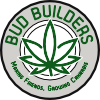Tremojem
Dank Daredevil
- Joined
- Mar 22, 2025
- Messages
- 270
- Reaction score
- 804
Okay, so I purchased a Koolatron 48L Thermoelectric Wine Cooler. I then drilled some holes for cables and installed a Circulation Fan, Sensor Probe and Dehumidifier using grommets and cable anchors. I use an AC Infinity 69 Pro for the temperature/humidity sensor. The fan circulates air indirectly. Below are the pics of the build and hopefully will be self explanatory. Ask any questions you may have. Thank you for any advice or suggestions.
The unit suffered from a chemical off gasing. It took me a couple weeks and several attempts to rid the unit from this smell. This included airing out with fan blowing inside, washing with white vinegar and baking soda, and finally...adding heat to the interior with a heating mat. After heating was complete and cooled down, I then energized the unit and set the temperature for 46 degrees Fahrenheit. I cooked at about 97 degrees Fahrenheit when using heat. I went back and forth twice between the two temperatures. Finally, the unit has no smell when cooling or not.
MAKE SURE TO VIEW PAGE 2 FOR REMAINING IMAGES!


Here is the build...
















The unit suffered from a chemical off gasing. It took me a couple weeks and several attempts to rid the unit from this smell. This included airing out with fan blowing inside, washing with white vinegar and baking soda, and finally...adding heat to the interior with a heating mat. After heating was complete and cooled down, I then energized the unit and set the temperature for 46 degrees Fahrenheit. I cooked at about 97 degrees Fahrenheit when using heat. I went back and forth twice between the two temperatures. Finally, the unit has no smell when cooling or not.
MAKE SURE TO VIEW PAGE 2 FOR REMAINING IMAGES!


Here is the build...


















































